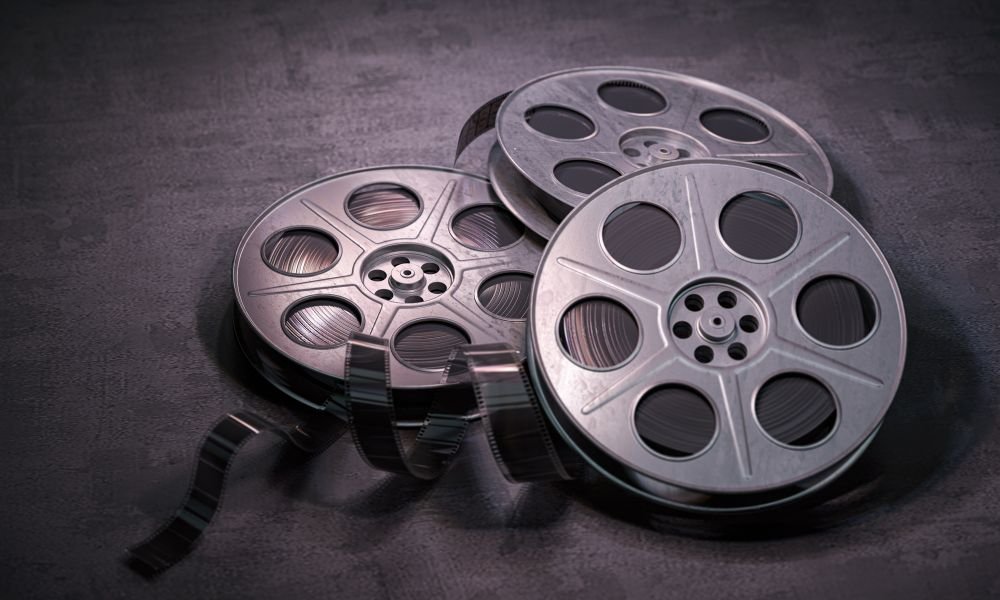How To Distinguish Between Audio Reels and Film Reels
Do you have canisters of reels sitting in storage but aren’t sure whether they’re for film or audio? Don’t worry—they can be tricky to identify if you’re unfamiliar with reels.
Let us help with some simple tips for distinguishing between audio and film reels and some strategies for preserving old reels.
Check the Packaging
If you’re unsure whether you’ve got an audio or film reel on your hands, the answer typically lies within the packaging. Check the box it came in or the canister that holds the reel for company logos or size measurements.
Film reels are always measured in millimeters (8mm, 16mm, etc.), while audio reels are always in inches (1/4-inch, 1/2-inch, etc.). Companies typically specialize in either film or audio reels, rarely both. Most film reels are produced by companies like Kodak, Fuji, Pathex, and Cine; some companies that are responsible for most audio reels include Sony, Ampex, Memorex, and Maxell.
If you see one of these companies on the label or packaging, you can then determine whether it’s a film or audio reel.
Fun Fact: Reel-to-reel tape recorders were invented in the 1920s in Germany but were not shared with the rest of the world until the end of World War II.
Inspect the Reel
If the packaging or canister doesn’t offer answers to what type of reel you’ve got on your hands, you could always open it up and inspect the reel yourself. Film and audio reels may look alike, but film reels will have printed images you should be able to see with the naked eye if you hold them up to the light.
Unspool the reel and hold it up to the light—if you’ve got small pictures, you’ve got yourself a film reel!
Pro Tip: Use gloves while handling film and audio reels to avoid damaging the reels with fingerprints and your skin’s oils.
Look for Perforations
If you don’t want to unspool the reel and possibly expose or damage it, you can always inspect the reels for perforations. Film reels have perforations, or “perfs”, which look like little empty squares alongside one or both sides of the reel.
These are exclusive to film reels, and no magnetic audio tape would have perforations. If you can spot those small, almost unnoticeable perfs on the reels, you can be sure you’ve got a film reel in your possession.
Why Do Film Reels Have Perforations?
Have you ever wondered why films have these small, empty squares on the edge of the reel? The perforations are for feeding the film into the projector through the sprocket.
The sprocket has claws, which grab the reel via the perforations and pull it through to the projector. It’s pretty similar to how a bike chain works—the reel is the chain, and the sprocket is the chainring grabbing and pulling the chain.
Perforations can tear easily, and if a reel with a damaged perforation is fed through a sprocket, it can cause severe damage to the entire reel. It’s wise to inspect your reel’s perforations for damage before using it on a projector.
Measure the Reel Width
If you’re still baffled about whether the reel is for film or audio, you can always break out the ruler and measure its width. As we mentioned earlier, film reels are measured in millimeters, the most common being 8mm and 16mm. However, 9.5mm and 35mm are also popular reel widths.
Audio reels are measured in inches, the most common being 1/4-inch and 1/2-inch. You may run into a 1-inch or 2-inch magnetic tape reel, but they’re not the most popular.
What does your ruler say? Film reels are always in exact measurements, so if you find a match, you know what you’ve got!
How To Preserve Old Audio Reels
Now that you know whether you’ve got an audio or film reel, you’ll want to preserve it so the reel can last for many more years. Luckily, we can help with that too! Follow these simple tips to keep your audio reels in mint condition for years to come.
Transfer to Digital
Audio magnetic tape reels are fickle and fragile, so the best way to guarantee they won’t fade and distort over the years is to digitize old tapes. Digitization is a straightforward and painless process that gives you digital copies of the precious audio tapes you want to continue using for a long time.
As digital copies, you’ll have guaranteed backups that won’t decay, fade, or distort over time—they’ll be the same as the day you converted them.
Store in a Controlled Setting
A storage environment that’s too hot or too cold, too humid or too dry can cause accelerated decay to audio reels. You want to use the Goldilocks formula—not too hot, not too cold, just right.
Temperature fluctuations can cause a magnetic audio tape to expand and contract, which can cause uneven winding and cinching, resulting in long-term damage. If you just toss your reels in the attic or basement, they could decay rapidly, leaving you with useless reels.
How To Preserve Old Film Reels
Most of the strategies for preserving audio reels are also applicable to film reels, but there’s more you should know if you want to keep your films clean and crisp for many more years.
Keep in a Cool & Dry Environment
Like audio reels, rapid temperature fluctuations or environments that are too damp or dry can damage film reels. Industry experts recommend utilizing the 40-40 rule—keep reels in an environment around 40 degrees with approximately 40 percent humidity.
Film reels are like any other organic material—the colder and dryer you keep them, the longer they’ll last and fight off decay. You can even keep them in the freezer or refrigerator—just not the one you use to store food!
Keep in a Protective Canister
If you don’t already have one, you’ll want to get a protective canister to store your film reels. Canisters make moving film reels easier while protecting the reel from light exposure, dust, and other airborne pollutants.
Pro Tip: Ensure the film is wound securely in the canister, not too loose or tight.
Hopefully, now you know how to distinguish between audio and film reels, as well as additional useful information regarding your reels. If you have any other questions or concerns regarding reels or digital conversion, don’t hesitate to consult with the experts at DiJiFi!


